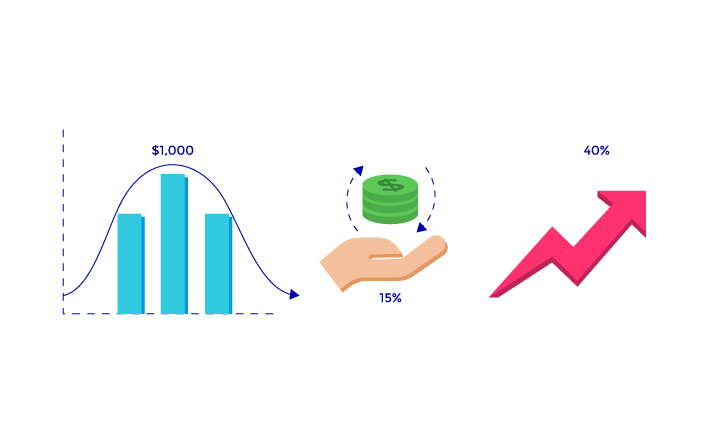How To Handle Cold Email Campaigns
Let’s look at some best practices for email campaigns targeted at cold leads.

Let’s look at some best practices for email campaigns targeted at cold leads. Not all email is created equal. Just throwing some provocative words together and sending them out do not guarantee success.
Remember a few key best practices. Let’s start with subject lines; as this is your digital calling card. Studies have shown that anywhere from a third to half of recipients open an email based on the subject line alone. About two thirds report an email as spam from just the subject line. Using a target’s first name in the subject line can significantly increase open rates. Personalized subject lines are far more likely to get people’s attention. Spammy-sounding subject lines are quickly relegated to the trash folder. If your opening subject line is weak, awkward, stilted, or generic, your recipients will—at best—delete without opening. At worst, they may report it as spam, and then your sender reputation takes a hit. It subsequently becomes much harder to get your message to the right people. So it is crucial to get this element right
Is one more likely to open a generic or personalized email from a stranger? The latter. So it is important that you personalize not only subject lines, but the main body as well. Be sure to use the prospect’s first name, location, company name, or a reference to a previous encounter—even if that encounter is farcical. The idea is to immediately—and obviously—make it all about the prospect. (That said, don’t come off as a stalker.) This is why hyper-targeting is imperative: One should always appeal to the prospect’s narcissistic tendencies by making it personal.

But what about more complex scenarios—like cold outreach, where specifics of each target might not be known? Templates are clearly inferior to personalized content. But is it prudent to ditch the templates altogether? Not necessarily. They can still be used; so long as they include different versions of the wording. So using them for cold leads requires a little more effort on your part.
Bear in mind that what works for one business won’t necessarily work for all. One trick is to convey urgency and exclusivity. A limited-time offer, a flash sale, a countdown to a special deal, or some sort of “just for you” subject line is likely to perform well…in part, because so many are concerned about “missing out” on something special. (FOMO is a psychical feature that can be exploited in lead generation.) Also, the “this is especially for YOU” angle appeals to the prospect’s narcissistic tendencies. (We all like to think it’s ALL ABOUT US.)
Baiting is an art-form; but always be honest. If it’s not really a limited-time or exclusive offer, don’t say it is; because you’ll lose their trust otherwise. While the subject-line shouldn’t come off as SPAMMY, the main body mustn’t come off as SCAMMY. So ensure you present yourself as a sincere actor, operating in good faith. Building trust is THE ONLY way to get from a cold opening to a sales conversion.
To come off as credible, clearly articulate specificity and convey utility. Does your subject line convey a specific and useful benefit to the recipient? Does it tell them exactly why they should open and read? Be decisive. Have a clear reason to reach out. You can warm up cold leads by monitoring them and reaching out when they’ve made a motion that indicates they may be ready to buy.
To put it bluntly: Ensure you convey why the target should “give a shit” about what you’re sending them. If this is not immediately apparent, the e-mail will be glossed over and/or promptly sent to the trash folder.
Even as you aim to be enticing, you must always remain authentic. Making outrageous claims that you can’t deliver on may get your foot in the door, but it won’t translate to a sale. Only promise / promote what you can reasonably expect to deliver. Fantastical or grandiose verbiage will be dismissed with an eye roll. One should be alluring, but one must also be PLAUSIBLE. So the trick is to grab people’s attention without being over- the-top

Your subject line may earn you an opening, but it’s the opening sentence that convinces recipients to keep reading. It should be an extension of your subject line, piquing curiosity and compelling the reader to continue. So make your opening line about your recipients. Don’t waste your opening line with “Hi, my name is ____ and I work at ____ company.” No one cares. Clarity beats ho-hum every time. What’s in it for them? What do you bring to the table? Which concerns can you address? How are you uniquely positioned to solve a pressing problem? Be specific.

That brings us to the main body. Your subject line gets you in. The opening line grabs their attention; persuades them to keep reading. The main body needs to deliver on whatever you’ve promised or claimed so far. So be authentic and real; and get to the point.
Remember, when cold, the lead doesn’t know you. So cut to the chase. Your subject and opening lines have bought you a bit of their time. Don’t waste it with a sloppy follow-through. For the main body, there’s a sweet spot of 50 to 130 words, written at basic reading level (the way one might talk to an astute Middle School student).
When courting cold leads, it is extremely important to capitalize on opportunities at each stage of the funnel. Outbound content is a great way to establish an air of authority.
Some of the content that you create should be ancillary: material that doesn’t even mention your product, but rather is educational and simply includes your logo. Establishing your brand as one that the market looks to for expertise / insights will produce superior brand recognition.
Your main body copy needs to answer one pivotal question: What’s in it for the reader? Spell it out. What problem will you be adept at solving? Who else have you already helped? Whenever possible, quantify the benefit with concrete numbers:

People respond to concrete stats more than abstract concepts.
To reiterate, it is important to personalize—or at least SEEM to personalize—cold sales emails. While most cold emails do not need to be hyper-personalized, they need to resonate with the target audience; so need to be somewhat relevant to what they are personally looking for. Be especially sure to personalize the first sentence.
At the end of the day, bear in mind that different prospects have different online profiles, different interests, and different concerns. In other words; you must factor in the fact that each target has different characteristics and pain points, so emails sent to each will tend to incorporate different tactics.
Subscribe to our newsletter to learn more about LeadMachine.
$49.95/per month
(pay nothing for 14days)